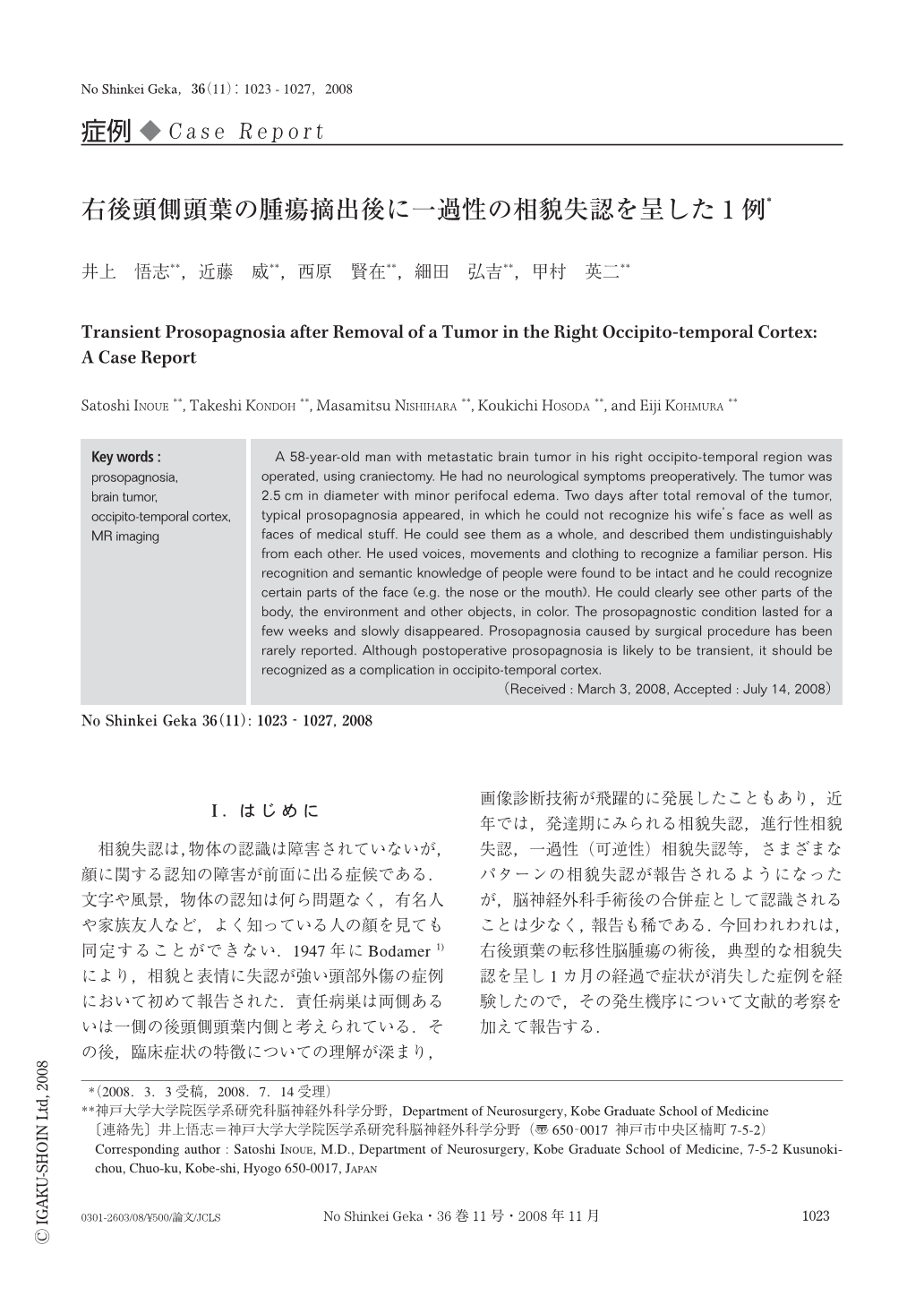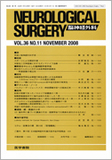Japanese
English
- 有料閲覧
- Abstract 文献概要
- 1ページ目 Look Inside
- 参考文献 Reference
Ⅰ.はじめに
相貌失認は,物体の認識は障害されていないが,顔に関する認知の障害が前面に出る症候である.文字や風景,物体の認知は何ら問題なく,有名人や家族友人など,よく知っている人の顔を見ても同定することができない.1947年にBodamer 1)により,相貌と表情に失認が強い頭部外傷の症例において初めて報告された.責任病巣は両側あるいは一側の後頭側頭葉内側と考えられている.その後,臨床症状の特徴についての理解が深まり,画像診断技術が飛躍的に発展したこともあり,近年では,発達期にみられる相貌失認,進行性相貌失認,一過性(可逆性)相貌失認等,さまざまなパターンの相貌失認が報告されるようになったが,脳神経外科手術後の合併症として認識されることは少なく,報告も稀である.今回われわれは,右後頭葉の転移性脳腫瘍の術後,典型的な相貌失認を呈し1カ月の経過で症状が消失した症例を経験したので,その発生機序について文献的考察を加えて報告する.
A 58-year-old man with metastatic brain tumor in his right occipito-temporal region was operated, using craniectomy. He had no neurological symptoms preoperatively. The tumor was 2.5cm in diameter with minor perifocal edema. Two days after total removal of the tumor, typical prosopagnosia appeared, in which he could not recognize his wife's face as well as faces of medical stuff. He could see them as a whole, and described them undistinguishably from each other. He used voices, movements and clothing to recognize a familiar person. His recognition and semantic knowledge of people were found to be intact and he could recognize certain parts of the face (e.g. the nose or the mouth). He could clearly see other parts of the body, the environment and other objects, in color. The prosopagnostic condition lasted for a few weeks and slowly disappeared. Prosopagnosia caused by surgical procedure has been rarely reported. Although postoperative prosopagnosia is likely to be transient, it should be recognized as a complication in occipito-temporal cortex.

Copyright © 2008, Igaku-Shoin Ltd. All rights reserved.


